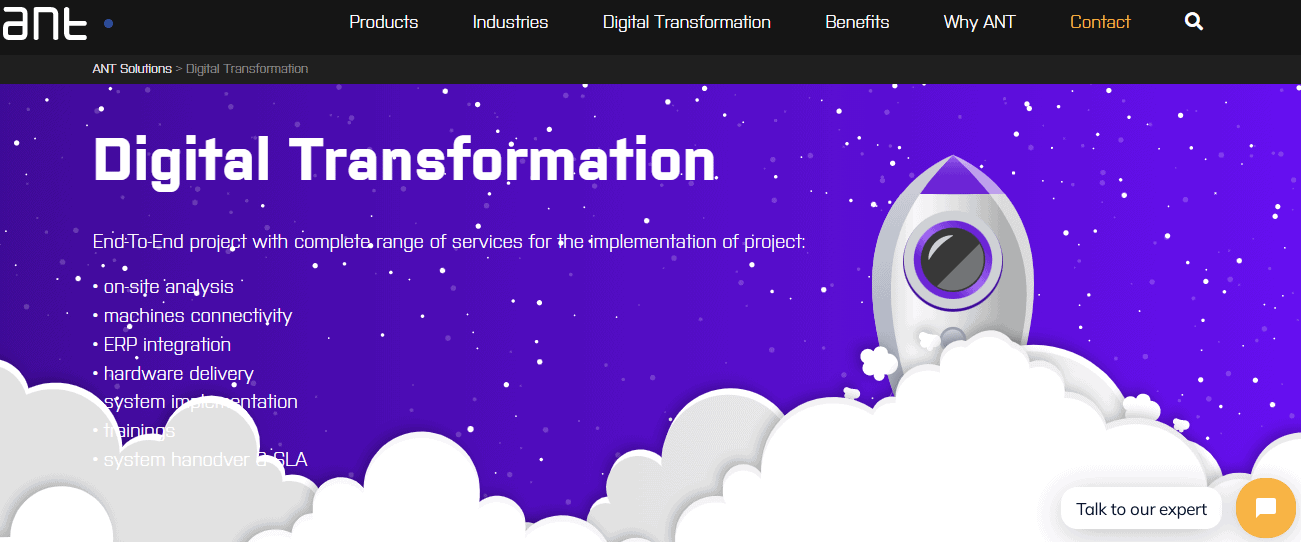All things digital seem to be the talk of the town for the last couple of years. Every discussion, seminar, or panel relating to technology can’t seem to stop the word from leaving their lips at least a few dozen times.
Digital technologies are the future of business, and the digital transformation of businesses has become a buzzword thrown around at every corner. So much so that the definition has become so broad that many people are unaware of what it entails.
Hate it or love it, one thing remains true; it became necessary. And while digital transformation may take different forms depending on the business implementing it, it’s not just a fancy term to say you’re moving to the cloud.
There are many questions about the process, and the answers are often overly vague. We’ll do our best to go through the fundamental steps and processes every journey involves.
What Exactly Is Digital Transformation?
Since the process can vary depending on the industry, a clear definition is hard to pinpoint. Essentially, digital transformation denotes the process that seeks to implement more efficient digital technologies into business. Furthermore, change the way they operate, interact with customers and employees, and even streamline and automate the workflow broadly.
This mouthful of a definition is difficult to understand because it can refer to almost anything, from integrations to collaboration and system analyses. However, no matter the complications, digital transformation is, in short, a force that drives businesses forward and launches them into the future.
Most businesses that don’t partake in this let’s call it “trend,” are not likely to thrive long term. Especially so in this day and age, where the pandemic virtually forced everyone to go digital, whether they had planned it or not.
Digital businesses have been taking the market by storm. Take the most famous example, the digital giant Amazon.
Back in 2005, no information suggested that traditional forms of business were threatened. But then there was Amazon, which began as little more than an online bookstore but quickly rose to prominence and is now worth more than most traditional brick and mortar stores combined.
So, how does one go about the digital transformation of their company, big or small? As we’ve mentioned earlier, the process can vary. However, there are a few key components to a good digital transformation strategy everyone should keep in mind.
Key Components of Digital Transformation
1. Define and Analyze

The first thing to do is figure out what you already have and develop a concept and a design. The idea should focus on what is and what will be, aka how you’re currently working and what you’re planning to change. Also, this includes all of the business processes and to-be-implemented procedures.
Set a comfortable budget and a detailed timeline with clear action plans and implement them throughout the process. The vision of future business operations is vital. Setting clear goals and making detailed plans for their implementation is a step you cannot afford to skip.
2. Connectivity and Integrations
It is vital to merge the old and the new. Don’t just toss out an entire business process that has been in place for months, if not years.
The goal of digital transformation is to improve business rather than to rip out everything but the root. Connect old and new machines and programs, and standardize their communication protocols. Depending on the niche, you can make the connection multiple different ways; cameras, wires, the internet, etc.
Ensure that everything leads back to a single central system where you can collect data on what’s going on. To know what needs to happen exactly, it’s also critical to identify where the current system falters or falls behind the times.
Another key component that plays into what we’ve already mentioned is integrations. Streamlining the systems’ workflows in place and syncing all the data reports is crucial if you’re looking for efficiency and progress.
3. Choosing and the Right Technologies and Their Implementation

Once you have all the information and know about your business needs, choosing the right software and hardware for the job is essential. To a great extent, what you’ll pick depends on the niche and the company’s size.
A common mistake that hinders this process is the belief that technology is the ultimate solution. But in reality, technology is just an enabler for change. What truly drives the process forward is proper implementation.
Before we go further and elaborate further on how to get the implementation and the process right, we first have to mention one thing. Be it hardware or software, double-check that everything functions right once the technology is in place. Otherwise, the whole journey might prove a failure through no fault of your own.
4. Get Employees Involved

Bringing in a new state-of-the-art system isn’t a guarantee for success. It’s all about the people behind the screen – the employees. As it is in any successful relationship, business or otherwise, communication is vital.
Explain every step of the process to the people that work for you. Stress how this will help them and isn’t just being put in place to make you more money and make their work more difficult because they know how to change their work style.
If the change is substantial ( in most cases, it is), employees might require training to deal with the new system. Like anything else, plan this out in detail to ensure no one is left behind and everyone gets the proper training. The last thing to remember here is that communication is a two-way street, so listen and learn.
5. One Step at the Time
A complete overhaul never happens overnight. These things take time, and every step must be carefully overseen and strategically executed. For many, the first step might be to move everything to the cloud. This in and of itself can be quite the undertaking. But it comes with massive benefits as far as data and synchronization are concerned.
Take it one step at a time, and remember that it’s different for everyone. There is no one-size-fits-all solution to digital transformation, and you may require some unconventional ideas. So, keep your cool, celebrate small victories, and look ahead.
Go Digital or Go Home
Besides just the company’s inner workings, digital transformation is a big hit with users and customers. A wholly optimized, digital business brings along a significant improvement in customer experience. And a great customer experience, in turn, boosts your business and builds the brand further. But, since digital transformation seems to be a must in today’s business landscape, why haven’t all companies adopted it yet?
The answer to this is a bit more complicated than it sounds. Digital transformation can be tricky, especially considering that many business owners are good at business, not tech. However, the most common hindrance seems to be the lack of a proper strategy or, in simple terms, not knowing how to go about it.

When it comes to planning out the whole process and executing it properly, many opt for a third party that helps them along the way. ANT Solutions – Digital Transformation Strategy is one such company that aids businesses in the process of digital transformation from the drawing board to the final product. They offer plenty of services that make the transition as painless as possible.
Going digital is not a one-man job, and if not handled properly, the project can turn into a disaster. Not every story is a successful one, but failing to go digital will, unfortunately, have the same effect in the long run as not attempting it at all.
Over to You
It’s a hot topic for a good reason. We’re living in the so-called “digital era,” and if just that alone doesn’t make you think about the importance of going digital, nothing probably will.
The digital transformation of your business may take some time, but it’s a road worth taking. If executed properly, it can launch a business into the future and improve it for years to come. When it comes to digital transformation, taking the road more traveled makes all the difference.
Latest posts by Ivana Banić (see all)
Where Should We Send
Your WordPress Deals & Discounts?
Subscribe to Our Newsletter and Get Your First Deal Delivered Instant to Your Email Inbox.
Thank you for subscribing.
Something went wrong.
Keep reading the article at WP Newsify. The article was originally written by Ivana Banić on 2021-11-19 07:29:06.
The article was hand-picked and curated for you by the Editorial Team of WP Archives.

